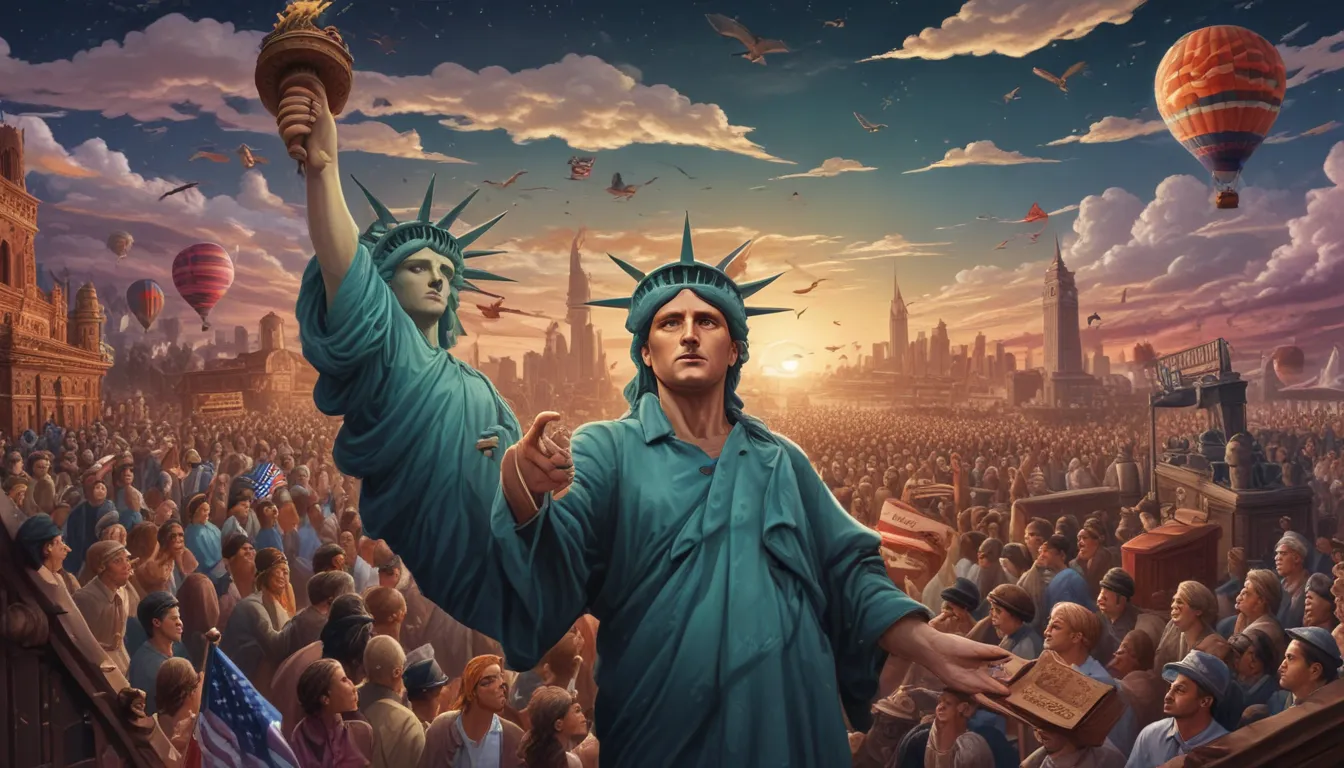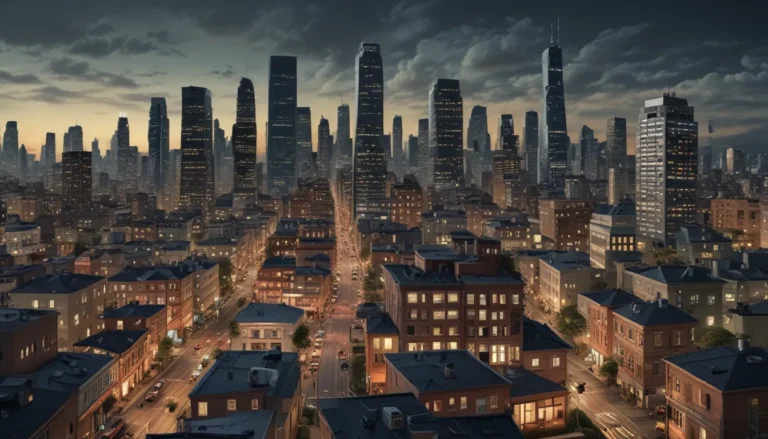A Note About Images: The images used in our articles are for illustration purposes only and may not exactly match the content. They are meant to engage readers, but the text should be relied upon for accurate information.
In a world shaped by migration, immigration policy stands at the intersection of demographics, economics, and social dynamics. It is a complex and evolving landscape that impacts countries globally. As we navigate the intricate realm of immigration policy, understanding its nuances is paramount for meaningful discussions and informed decision-making.
Unveiling the Diversity of Immigration Policies
The tapestry of immigration policies varies vastly across nations, mirroring their distinct political, economic, and social landscapes. Each country crafts its own approach to managing the influx of foreign nationals, reflecting its unique priorities and challenges.
Influence on Demographics: A Delicate Balance
Immigration policies wield a profound influence on a country’s demographic makeup. They shape age distribution, cultural diversity, and the dynamics of the workforce, molding the very fabric of societies.
Traversing the Historical Evolution
Immigration policies have traversed a rich tapestry of transformations over time. Geopolitical shifts, economic conditions, and societal perceptions towards migrants have all contributed to the changing landscape of immigration policy.
Regulating Foreign Entry: The Core Objective
At its core, immigration policy aims to regulate the entry, stay, and rights of foreign individuals within a country’s borders. It serves as a mechanism for managing the inflow of migrants while balancing national interests and humanitarian considerations.
Navigating Stringent Policies
Certain nations adopt stringent immigration policies characterized by stringent criteria for entry, extensive documentation, and rigorous security checks. These policies reflect a strong emphasis on controlling access to the country.
Influence of Public Opinion: Shaping Policies
Public sentiment towards immigrants plays a pivotal role in shaping immigration policies. Government actions often align with the prevailing will of the majority, reflecting broader societal attitudes.
Economic Implications: A Dual Impact
The economic ramifications of immigration policies are multi-faceted. The influx of skilled labor and foreign investments can catalyze economic growth, driving innovation and enhancing productivity. However, they may also lead to wage disparities and strain on social services in certain sectors.
Balancing National Interests and Humanity
Immigration policies strive to strike a delicate balance between safeguarding national security, preserving domestic jobs, and fulfilling moral obligations to provide refuge to those in need. They represent a nuanced interplay between self-interest and altruism.
Political Debates: A Reflective Mirror
Immigration policies often spark intense political debates, reflecting divergent ideologies, competing interests, and myriad perspectives on multiculturalism. They stand as a microcosm of broader societal discourses.
Addressing Refugee Resettlement: A Vital Pillar
Numerous countries have dedicated immigration policies aimed at addressing the resettlement and protection of individuals fleeing persecution or conflict in their homelands. These policies are a testament to humanitarian values.
Safeguarding National Security: A Priority
Security concerns wield a significant influence on immigration policies, prompting measures aimed at curbing illegal immigration, terrorism, and organized crime. The intersection of security and migration remains a critical issue.
Family Reunification: A Compassionate Lens
Certain immigration policies prioritize family reunification, allowing relatives of residents or citizens to join them in the host country. These policies underscore the importance of familial bonds in migration dynamics.
Economic Needs: Tailoring Policies
Countries facing labor shortages or specific skills deficits may design immigration policies that target individuals with the requisite qualifications. Such policies are crafted to address pressing economic needs and drive growth.
Fostering Cultural Diversity: A Tapestry of Identities
Immigration policies play a pivotal role in fostering cultural diversity by attracting individuals from diverse backgrounds. They enrich the social fabric of a nation, contributing to a vibrant and inclusive society.
Embracing Reforms: Responding to Change
In response to evolving circumstances and societal needs, immigration policies undergo reforms, amendments, or comprehensive overhauls. These changes reflect a dynamic landscape shaped by shifting priorities.
Conclusion: Navigating the Complexities of Immigration Policy
In conclusion, immigration policy stands as a multifaceted domain with profound implications for societies worldwide. The 15 insightful facts presented here illuminate various facets of this critical issue, offering a deeper understanding of its complexities. Approach discussions on immigration policy with empathy, compassion, and evidence-based reasoning to forge inclusive and equitable policies that benefit both migrants and host countries.
FAQs: Exploring Immigration Policy
-
What is immigration policy?
Immigration policy refers to the set of laws, regulations, and procedures formulated by a country to manage the entry, stay, and rights of foreign nationals within its borders. -
How does immigration policy affect the economy?
Immigration policy can have both positive and negative impacts on the economy, contributing to growth by bringing in skilled workers but also potentially suppressing wages in select sectors. -
What are the different types of immigration policies?
Immigration policies vary across countries and can include family-based immigration, employment-based immigration, refugee and asylum policies, and temporary worker programs. -
Why do countries have immigration policies?
Countries develop immigration policies to manage foreign nationals, protect national security, meet economic needs, and preserve cultural cohesion in society. -
How does immigration policy impact social integration?
Immigration policy plays a crucial role in shaping the social integration of migrants, with policies promoting language acquisition and access to education enhancing cohesion. -
How do countries determine immigration quotas and limits?
Immigration quotas and limits are set based on factors like labor market needs, national security considerations, and demographic trends, subject to periodic adjustments. -
What is the difference between immigration and asylum policies?
Immigration policies govern the entry and stay of foreign nationals, while asylum policies offer protection to those fleeing persecution in their home countries. -
How do immigration policies impact undocumented immigrants?
Undocumented immigrants face challenges accessing services and legal protections due to immigration policies, which can differ in their treatment of unauthorized individuals. -
Balancing security and humanitarian concerns
Countries strive to strike a balance between security imperatives and humanitarian obligations in immigration policies, employing comprehensive checks and systems to ensure safety. -
Can immigration policy be changed?
Immigration policies can be altered through legislative processes, executive orders, and international agreements, responding to shifts in political, economic, and social contexts.
By delving into the intricate realm of immigration policy, we gain a deeper appreciation for its far-reaching impacts and the diverse considerations that shape this critical domain. As we navigate the complexities of migration dynamics, let us approach these discussions with empathy, curiosity, and a commitment to fostering inclusive and equitable policies.






